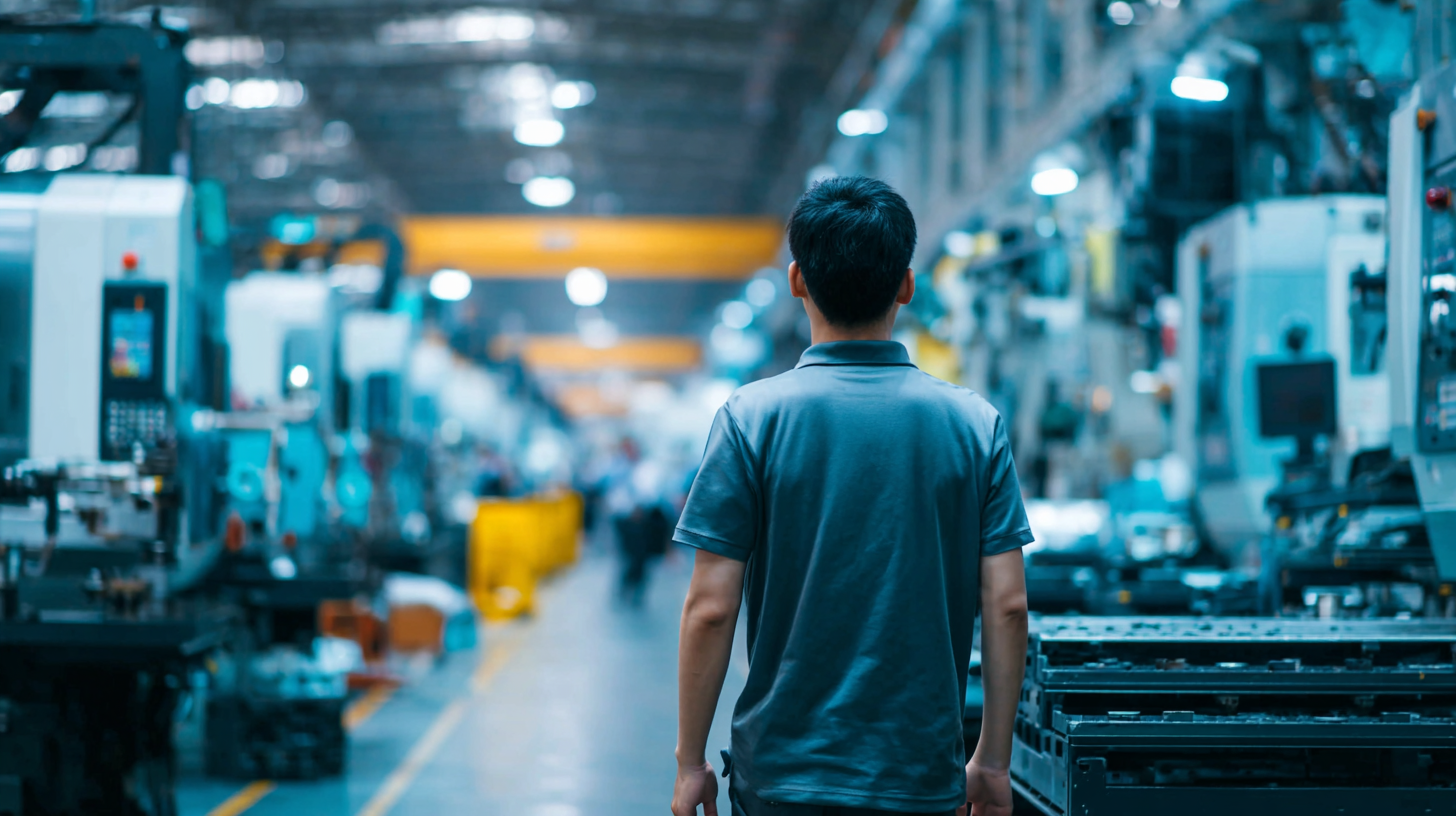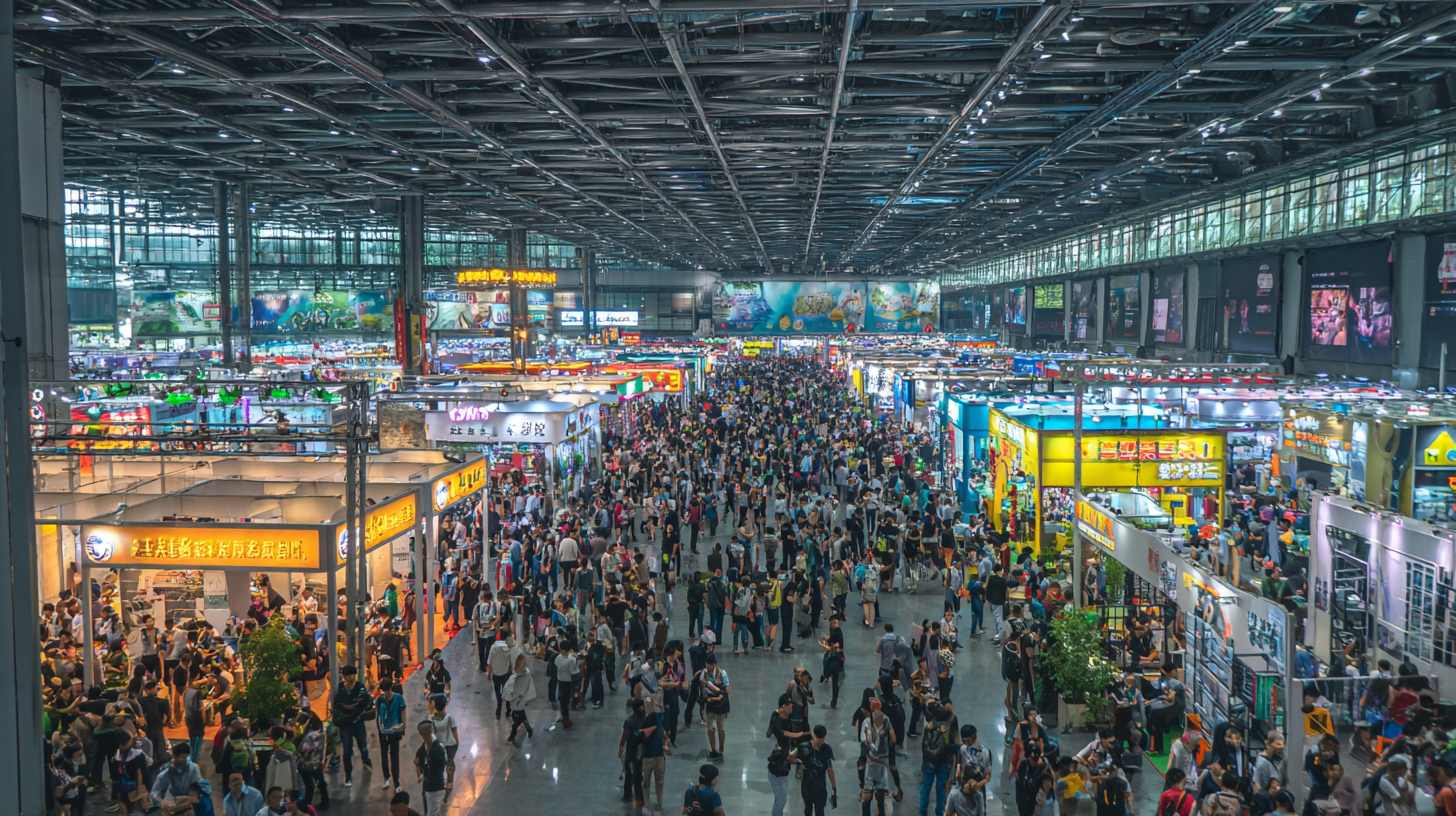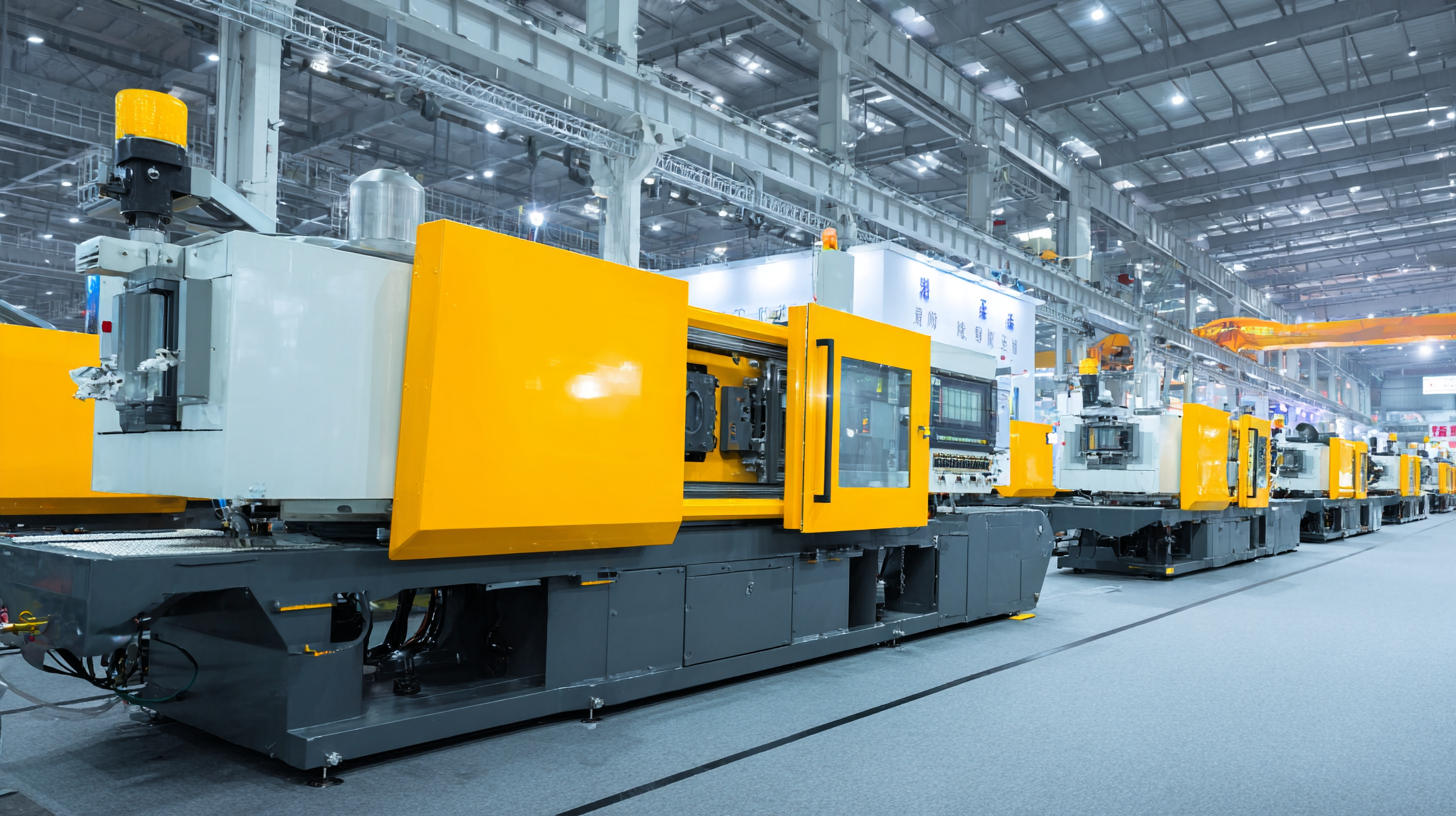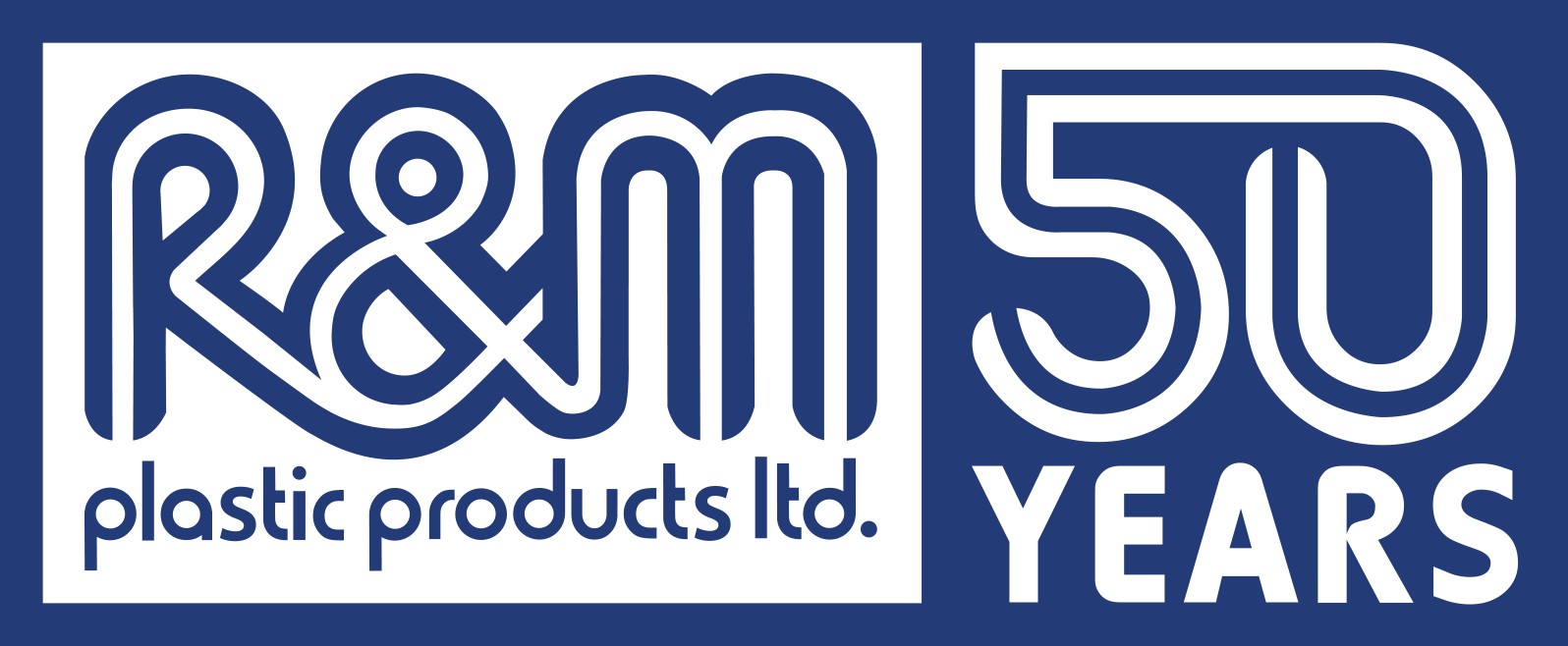Impact of Injection Molding Cost Trends on Businesses Exhibiting at the 138th Canton Fair 2025
As businesses prepare for the 138th Canton Fair in 2025, understanding the trends in injection molding cost is crucial for making informed decisions. Recent reports indicate that the global injection molding market is projected to reach approximately $335 billion by 2026, growing at a compound annual growth rate (CAGR) of 5.8% from 2021 to 2026. This growth, influenced by rising demand in sectors such as automotive, consumer goods, and electronics, underscores the importance of cost efficiency in manufacturing processes.

However, fluctuations in raw material prices and labor rates have been driving injection molding costs higher, with studies suggesting a potential increase of 10-15% in manufacturing expenses over the next few years. As exhibitors at the Canton Fair strive to remain competitive, carefully analyzing these cost trends will be vital for optimizing production strategies, pricing models, and ultimately ensuring business sustainability in a challenging economic landscape.
Impact of Rising Injection Molding Costs on Product Pricing Strategies for Exhibitors
As businesses prepare to exhibit at the 138th Canton Fair in 2025, they must navigate the rising costs associated with injection molding. These escalating expenses can significantly affect product pricing strategies, forcing exhibitors to reconsider their pricing models to maintain competitiveness. The need to adjust for increased material and manufacturing costs is particularly pressing in an inflationary environment, where purchasing power is decreasing and consumers are more sensitive to price changes.
Moreover, the impact of external economic factors, such as currency exchange rates, cannot be overlooked. For manufacturers who rely on imported raw materials and components, fluctuations in exchange rates can further complicate cost management. This adds an additional layer of complexity for exhibitors at the Canton Fair, as they strive to balance profit margins while appealing to cost-conscious buyers. By adopting innovative pricing strategies that reflect both current economic conditions and consumer expectations, businesses can better position themselves to succeed in a challenging marketplace.

Key Factors Influencing Injection Molding Cost Trends During the Canton Fair
As businesses prepare for the 138th Canton Fair in 2025, understanding the key factors influencing injection molding cost trends becomes essential for strategic decision-making. Amid global supply chain challenges and varying demand patterns, the cost of raw materials has skyrocketed, significantly impacting manufacturing expenses. Fluctuations in oil prices, labor costs, and tariffs also play a pivotal role in shaping these trends. Businesses attending the fair should stay updated on these variables to optimize their pricing strategies and maintain competitiveness.
**Tips:** To effectively navigate these cost changes, companies should consider diversifying their suppliers to mitigate the risk associated with raw material shortages. Leveraging advanced technologies, such as automation in the injection molding process, can lead to increased efficiency and reduced labor costs, thus helping businesses cope with rising expenses.
Additionally, staying engaged with industry publications and trade shows can provide valuable insights into emerging trends. Networking with fellow exhibitors can reveal innovative practices and sourcing options that can help businesses adapt to the evolving market landscape, ensuring they remain agile in the face of injection molding cost fluctuations.

Strategies for Businesses to Mitigate Injection Molding Cost Pressures
The rising costs associated with injection molding present significant challenges for businesses, particularly those preparing for the Canton Fair in 2025. In light of recent tariff policies impacting the toy industry, where nearly half of American small to medium-sized enterprises are at risk of closure, it is crucial for these businesses to adopt strategic measures to mitigate cost pressures. According to projections, the Global Industrial Mold Market is anticipated to reach USD 119.73 billion by 2033, highlighting the need for companies to implement efficient production techniques.
One effective strategy is leveraging advanced manufacturing technologies such as 3D printing, which offers a competitive edge by reducing reliance on imported materials and decreasing production costs. With the ability to streamline designs and shorten supply chains, 3D printing can serve as a robust response to tariff challenges. Furthermore, proactive risk management and data-driven reshoring initiatives can reinforce resilience against market volatility, allowing businesses to maintain flexibility and adapt to changing economic conditions amidst rising injection molding costs. Emphasizing these strategies will empower firms to navigate the complexities of the current landscape and enhance their chances of success at international exhibitions.
Market Opportunities for Cost-Efficient Injection Molding Solutions at the Fair
As businesses prepare for the 138th Canton Fair in 2025, the rising trends in injection molding costs present both challenges and opportunities in the manufacturing sector. A recent report from Grand View Research highlights that the global injection molding market is projected to reach $376.5 billion by 2030, driven by the increasing demand for cost-effective manufacturing solutions. This opens avenues for exhibitors at the fair to showcase innovations that optimize production efficiency while minimizing costs.
With the ongoing fluctuations in raw material prices and labor costs, investors are keenly looking for injection molding solutions that promise sustainability without compromising on quality. According to a study by Technavio, the shift towards lightweight materials and advanced automation in injection molding processes is gaining momentum, with expected growth rates surpassing 5% annually.
Companies demonstrating efficient, cost-reduced molding technologies at the fair can attract attention from international buyers seeking to improve their manufacturing capabilities and lower their operational expenses. This trend underscores the importance of incorporating cutting-edge technology and presenting it effectively at the fair to capitalize on these emerging market opportunities.
Long-Term Implications of Injection Molding Costs on Industry Competitiveness
The escalating costs of injection molding are set to have profound long-term implications on industry competitiveness, especially for businesses showcasing their products at the 138th Canton Fair in 2025. As reported by the latest Market Research Future report, injection molding costs are projected to increase by approximately 5% annually, driven by rising raw material prices and labor costs. This persistent rise not only strains profit margins but also affects pricing strategies, potentially rendering businesses less competitive in a global market saturated with low-cost alternatives.
To navigate these challenges, companies must adopt innovative cost management strategies to mitigate the effects of increasing injection molding expenses. A recent study from Grand View Research highlights that investing in automation can lead to a 20-30% reduction in manufacturing costs over time. By incorporating smarter production techniques, businesses can maintain their edge even as cost pressures mount.
Tips: Embrace technology to streamline production and reduce costs, explore alternative materials that may offer savings without sacrificing quality, and keep a close watch on industry trends to adjust strategies proactively. Staying informed and agile will be key in maintaining competitiveness amidst fluctuating injection molding costs.
